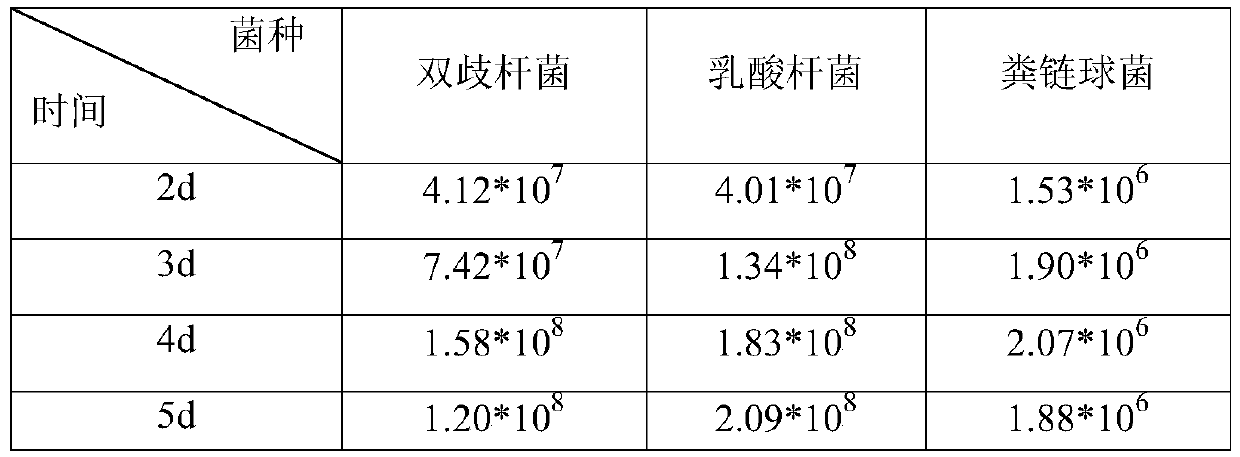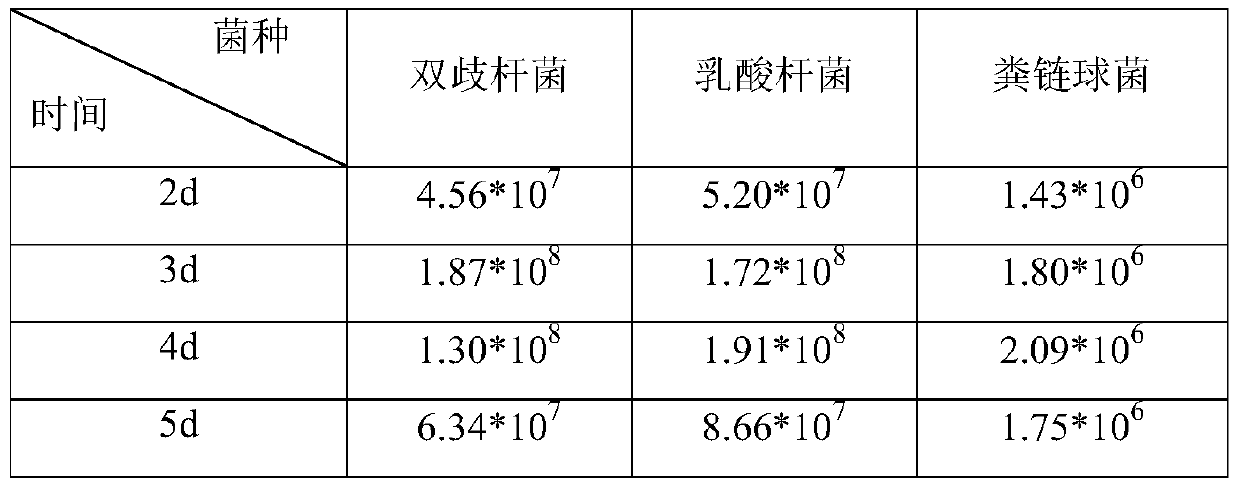Micro-ecological preparation and application thereof in breeding of Tibetan pigs
A micro-ecological preparation, Tibetan fragrant pig technology, applied in the field of microbial fermentation and livestock feeding, can solve the problems of feeding mode and feed not being the most economical and most suitable, and the taste of live pigs is declining, so as to reduce the cost of feeding and production, expand the scope of breeding, improve the The effect of economic value
- Summary
- Abstract
- Description
- Claims
- Application Information
AI Technical Summary
Problems solved by technology
Method used
Image
Examples
Embodiment 1
[0023] Example 1 Screening of the main probiotic species in the intestinal tract of Tibetan fragrant pigs and the ratio of fermented yeast solution
[0024] 1. Weigh the contents of each intestinal section of Tibetan pig
[0025] (1) steps
[0026] Simulate intestinal fermentation of Tibetan pigs, dissect Tibetan pigs around 8 months old, weigh the contents of each intestinal segment, sample the contents and segments of each intestinal segment, make tissue slices of each intestinal segment, and observe the morphological characteristics.
[0027] (2) Results
[0028] Contents of each intestinal segment: cecum 0.34kg, duodenum 42.6kg, rectum 0.28kg, jejunum 1.04kg, colon 5.16kg, ileum 12.0g.
[0029] 2. Screen the main probiotic species in the intestines of Tibetan pigs
[0030] (1) steps
[0031] Simulate the intestinal fermentation of Tibetan pigs, complete the treatment of samples, measure the number of dominant bacteria in each intestinal section of pigs, and determine t...
Embodiment 2
[0040] The screening of embodiment 2 optimal fermentation conditions
[0041] Select the required bacterial species to cultivate, increase the bacteria, and mix uniformly according to the ratio of Example 1 to obtain the probiotics (i.e. yeast liquid), the volume to mass ratio of the probiotics to the green fodder is 160:7 in mL / kg Then add appropriate amount of cornmeal, brown sugar and water and mix well. Among them, the concentration of cornmeal is 25g / L, the concentration of brown sugar is 100g / L, and the mass volume ratio of green fodder to water is 5:1 in kg / L. Conduct micro-fermentation pre-tests in the laboratory to explore and determine the optimal fermentation time and temperature.
[0042] Set two fermentation temperature ranges of 25-30°C and 32-37°C for micro-fermentation, count the number of viable bacteria of each strain after different days of fermentation, and explore the most suitable fermentation conditions. The results are shown in Tables 1 and 2 below.
...
Embodiment 3
[0051] Embodiment 3 pig raising effect
[0052] Fermentation was carried out in the experimental field, and the actual fermentation conditions were observed to be good, and pig feeding was started. According to the preset grouping, the pig feeding program was carried out, the pig feeding experiment was carried out for 4 months, the feeding situation was observed and recorded, and the weight gain data of the experimental group and the control group were counted.
[0053] 1. The following is the preset grouping and pig feeding plan, and the grouping situation is as follows (the initial weight range is 10-14kg).
[0054] Group a—experimental group
[0055] Column 1: 8 60-day-old Tibetan pigs (s2);
[0056] Column 2: 8 60-day-old Large White pigs ((b)S2);
[0057] Column 1 and Column 2 fed the fermented feed for 3 consecutive days from the 10th to the 12th of each month, and fed the full-price feed for the rest of the time.
[0058] Feeding of fermented green fodder in column ...
PUM
 Login to View More
Login to View More Abstract
Description
Claims
Application Information
 Login to View More
Login to View More - R&D
- Intellectual Property
- Life Sciences
- Materials
- Tech Scout
- Unparalleled Data Quality
- Higher Quality Content
- 60% Fewer Hallucinations
Browse by: Latest US Patents, China's latest patents, Technical Efficacy Thesaurus, Application Domain, Technology Topic, Popular Technical Reports.
© 2025 PatSnap. All rights reserved.Legal|Privacy policy|Modern Slavery Act Transparency Statement|Sitemap|About US| Contact US: help@patsnap.com



